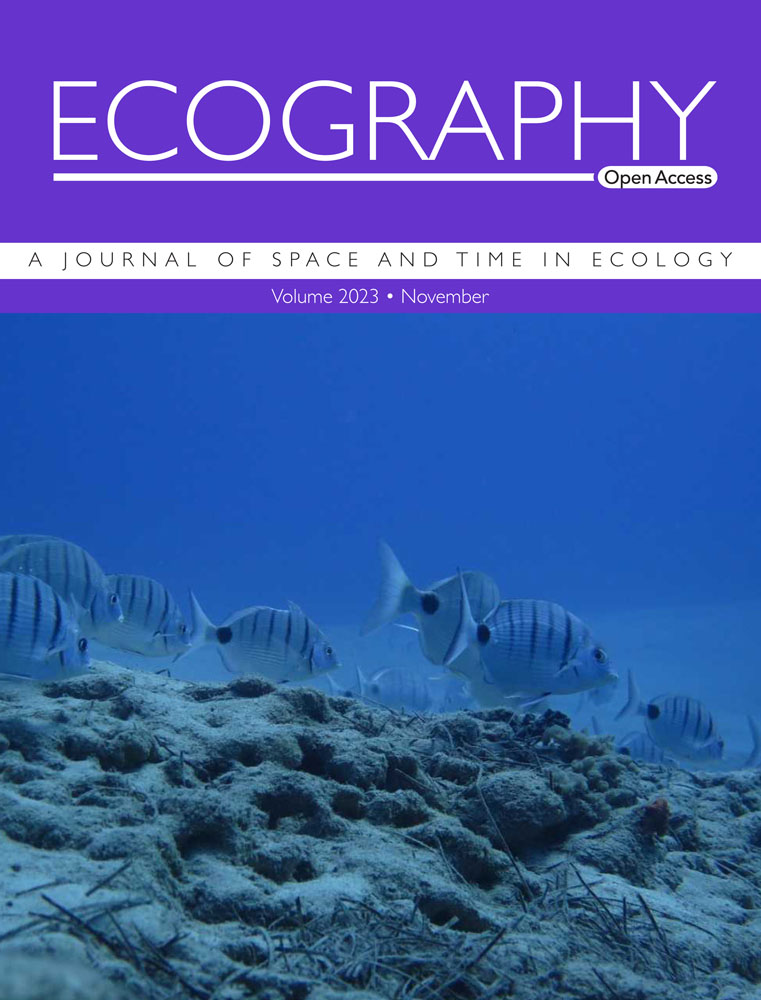The effects of climate on bat morphology across space and time
IF 5.4
1区 环境科学与生态学
Q1 BIODIVERSITY CONSERVATION
引用次数: 0
Abstract
According to Bergmann's and Allen's rules, climate change may drive morphological shifts in species, affecting body size and appendage length. These rules predict that species in colder climates tend to be larger and have shorter appendages to improve thermoregulation. Bats are thought to be sensitive to climate and are therefore expected to respond to climatic changes across space and time. We conducted a phylogenetic meta-analysis on > 27 000 forearm length (FAL) and body mass (BM) measurements from 20 sedentary European bat species to examine body size patterns. We assessed the relationships between body size and environmental variables (winter and summer temperatures, and summer precipitation) across geographic locations, and also analysed temporal trends in body size. We found sex-specific morphological shifts in the body size of European bats in response to temperature and precipitation patterns across space, but no clear temporal changes due to high interspecific variability. Across Europe, male FAL decreased with increasing summer and winter temperatures, and BM increased with greater precipitation. In contrast, both FAL and BM of female bats increased with summer precipitation and decreased with winter temperatures. Our data can confirm Bergmann's rule for both males and females, while females' BM variations are also related to summer precipitation, suggesting a potential link to resource availability. Allen's rule is confirmed only in males in relation to summer temperature, while in females FAL and BM decrease proportionally with increasing temperature, maintaining a constant allometric relationship incompatible with Allen's rule. This study provides new insights into sex and species-dependent morphological changes in bat body size in response to temperature and precipitation patterns. It highlights how body size variation reflects adaptations to temperature and precipitation patterns, thus providing insights into potential species-level morphological responses to climate change across Europe.根据伯格曼和艾伦的规则,气候变化可能会推动物种的形态变化,影响体型和附肢长度。这些规则预测,寒冷气候下的物种往往体型较大,附肢较短,以改善体温调节。蝙蝠被认为对气候很敏感,因此会对跨时空的气候变化做出反应。我们对来自 20 个欧洲定居蝙蝠物种的 > 27 000 个前臂长度(FAL)和体重(BM)测量值进行了系统发育荟萃分析,以研究体型模式。我们评估了不同地理位置的体型与环境变量(冬季和夏季温度以及夏季降水量)之间的关系,还分析了体型的时间趋势。我们发现欧洲蝙蝠的体型会随着温度和降水量的变化而发生跨空间的性别特异性形态变化,但由于种间变异性很大,因此没有明显的时间变化。在整个欧洲,雄性FAL随着夏季和冬季气温的升高而减小,而BM则随着降水量的增加而增大。相反,雌性蝙蝠的FAL和BM都随着夏季降水量的增加而增加,随着冬季气温的降低而减少。我们的数据证实了雄性和雌性蝙蝠的伯格曼法则,而雌性蝙蝠的生物量变化也与夏季降水有关,这表明蝙蝠的生物量变化可能与资源可用性有关。只有雄性的艾伦法则与夏季温度有关,而雌性的FAL和BM则随着温度的升高成比例地减少,保持了一种与艾伦法则不相容的恒定异速关系。这项研究为了解蝙蝠体型随温度和降水模式而发生的形态变化提供了新的视角。它强调了体型变化是如何反映出对温度和降水模式的适应性的,从而为欧洲各地物种对气候变化的潜在形态学响应提供了见解。
本文章由计算机程序翻译,如有差异,请以英文原文为准。
求助全文
约1分钟内获得全文
求助全文
来源期刊

Ecography
环境科学-生态学
CiteScore
11.60
自引率
3.40%
发文量
122
审稿时长
8-16 weeks
期刊介绍:
ECOGRAPHY publishes exciting, novel, and important articles that significantly advance understanding of ecological or biodiversity patterns in space or time. Papers focusing on conservation or restoration are welcomed, provided they are anchored in ecological theory and convey a general message that goes beyond a single case study. We encourage papers that seek advancing the field through the development and testing of theory or methodology, or by proposing new tools for analysis or interpretation of ecological phenomena. Manuscripts are expected to address general principles in ecology, though they may do so using a specific model system if they adequately frame the problem relative to a generalized ecological question or problem.
Purely descriptive papers are considered only if breaking new ground and/or describing patterns seldom explored. Studies focused on a single species or single location are generally discouraged unless they make a significant contribution to advancing general theory or understanding of biodiversity patterns and processes. Manuscripts merely confirming or marginally extending results of previous work are unlikely to be considered in Ecography.
Papers are judged by virtue of their originality, appeal to general interest, and their contribution to new developments in studies of spatial and temporal ecological patterns. There are no biases with regard to taxon, biome, or biogeographical area.
 求助内容:
求助内容: 应助结果提醒方式:
应助结果提醒方式:


